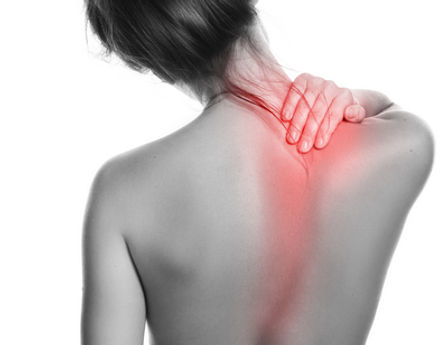To Schedule An Appointment
Osteoarthritis pain treatment
Schedule an appointment with a professional rheumatologist consultant to get rid of osteoarthritis pain in the knees, hip, neck and other joints. Tap the button below to fill the contact form.
What is Osteoarthritis?
Osteoarthritis is the most common type of arthritis and is also known as “wear and tear” arthritis. It occurs when the cartilage between bones breaks down, resulting in joint pain. Cartilage’s function is to cushion the bones that meet at the joint. With osteoarthritis, cartilage stiffens and becomes less flexible and therefore less able to cushion and absorb shocks.
Broken cartilage does not regrow on its own, so osteoarthritis typically worsens over time. It can affect any joint in the body, although it frequently affects the weight-bearing joints such as the knees, hips and spine. The onset of osteoarthritis is usually in middle age, and it is most prevalent in women over the age of 50.

Symptoms and causes
Osteoarthritis causes joint pain. The condition is especially common in the knees, hips, hands, and spine. Pain may increase related to weather and can feel like stiffness, tenderness and swelling. Pain may also increase during active use of the joint, immediately after use of the joint, or at the end of the day.
Joint stiffness is typically worse in the morning. Osteoarthritis can even result in joint deformity and limping. It can weaken muscles around the affected joint, causing buckling. Moving the affected joints can feel like the bones are grating or scraping against each other. People with osteoarthritis have an increased risk of falls and fractures.

Osteoarthritis can be treated with medication, physical therapy and sometimes surgery. Although it usually occurs gradually, the condition can be worsened by injury or obesity. Maintaining a healthy weight and controlling blood sugar is important to help prevent or manage symptoms. In turn, having osteoarthritis can make mobility difficult and lead to reduced exercise which increases the risk of obesity, heart disease and diabetes.
Physical therapy and certain exercises can help reduce the pain of osteoarthritis. Helpful exercises include stretching, balance and strengthening exercises as well as cardio. Medications such as acetaminophen, aspirin and ibuprofen can help with pain and steroids or plasma injections can reduce inflammation. Joint replacement surgery is an option for the most severely affected patients.
Treating osteoarthritis

FAQs about osteoarthritis
-
Is osteoarthritis a disability?Osteoarthritis is a chronic and painful condition that can be disabling as it affects the ability to perform daily tasks or work. The condition is classified as a disability when there’s anatomical deformity of joints, a failing range of motion, and increased pain that prevents doing basic tasks like walking. Being a type of arthritis, Osteoarthritis is the reduction of cartilage between the joints that causes friction between the bones that can result in the formation of bone spurs and cysts and usually affects the hands, hips, knees, feet, and compression of the spinal nerves or spinal cord.
-
Is osteoarthritis hereditary?While Osteoarthritis cannot be directly linked to a specific cause, there are common factors that have been identified. It is possible that it’s genetic where multiple family members suffer from the condition. If your grandparents, parents, and siblings have Osteoarthritis, there is an increased risk of you getting it, particularly with genetic joint defects. If you do have symptoms of joint pain, it’s important to gather medical history from your family before seeing a doctor as diagnosis relies on this information together with a physical examination. Other causes are also likely such as years of sport that can affect joints.
-
Can I claim pip for osteoarthritis?If you are medically diagnosed with Osteoarthritis and it’s affecting your ability to work and earn an income, you may be able to claim Social Security disability benefits. People aged 16 years and over may qualify for Personal Independence Payment (PIP) as a benefit to provide support in covering additional costs due to a long-term health condition or disability. PIP is paid when Osteoarthritis has a disabling effect on everyday life where load-bearing joints, like hands, feet, hips, knees, and spine are affected. It is a progressive joint disease that can worsen over time.
-
Can osteoarthritis spread?The risk of developing Osteoarthritis increases with age. Many people over 60 years are likely to have some form of the condition with varying degrees of severity. It is an incurable, degenerative disease that progresses through four stages, which can take years or decades to spread. While the progression of Osteoarthritis cannot be stopped, early detection and therapy can slow the rate of degeneration. It usually starts in one large joint and typically spreads to other joints over time. One affected joint can alter movement and mobility, which in turn can affect the alignment of other joints predisposing them to Osteoarthritis.
-
What are the symptoms of osteoarthritis?Symptoms of Osteoarthritis slowly develop over time and initially start with pain and stiffness that doesn’t go away. Affected joints start hurting during or after movement and stiffness will be especially noticeable in the mornings or after a period of inactivity. Joints feel tender when any pressure is applied on or near the affected area. You may also start noticing a limited range of movement and loss of flexibility. Bone spurs, swelling and a grating sensation around the joints start occurring as the condition get worse. This is accompanied by popping or crackling sounds when moving the joints.






